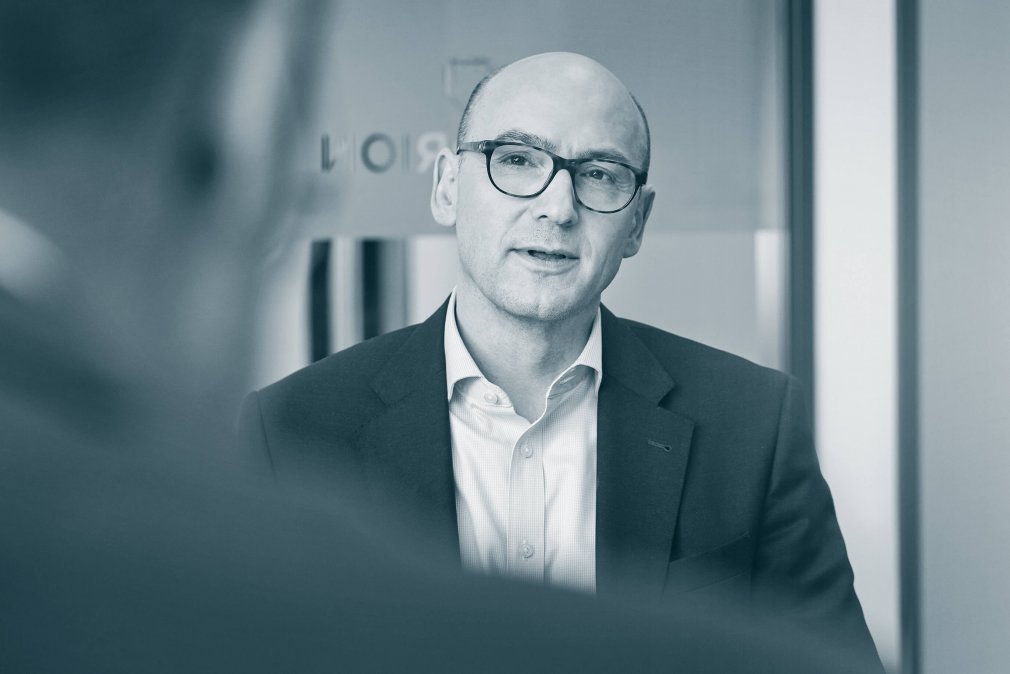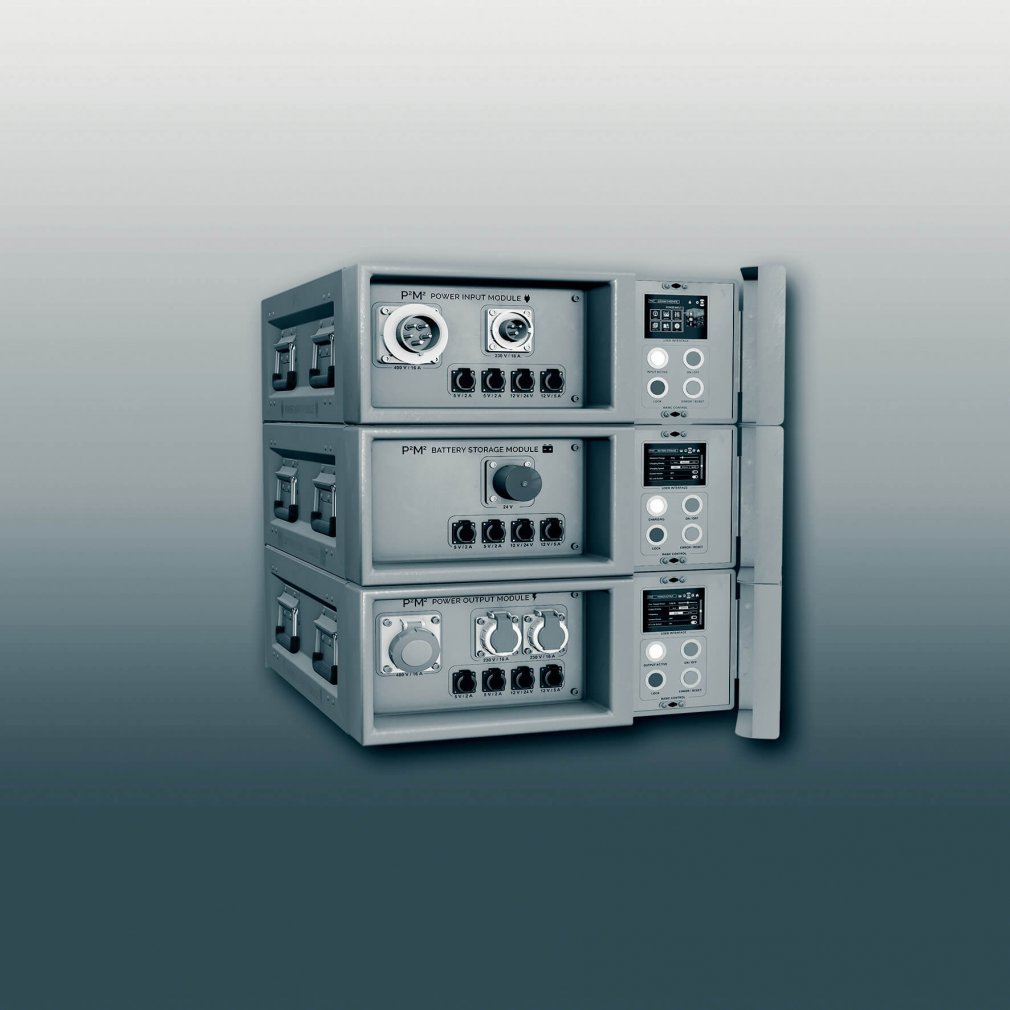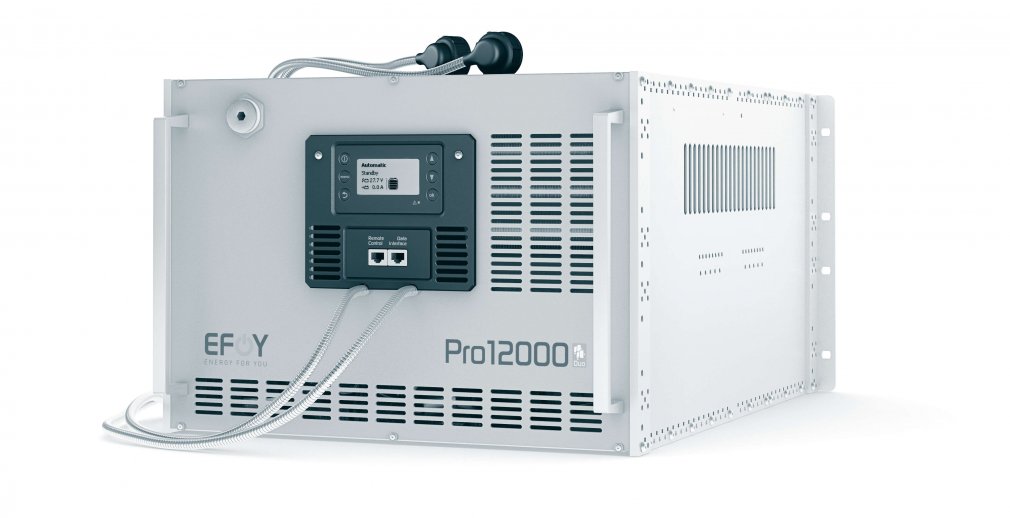Wedel. Claus Ruhe Madsen, Schleswig-Holstein’s Minister for Economics, visited the technology company VINCORION in Wedel on Friday, April 14, to learn more about the situation in the German state’s industrial SME sector. The minister stressed that the German Armed Forces must be equipped quickly and that there shouldn’t be any further delays in procurement.
In a conversation with Madsen, Stefan Stenzel, managing director of VINCORION, explained the industry’s desire for planability and reliability from policymakers. He also showcased the latest developments in the industry related to, for example, “green defense” and ways to cut carbon emissions.
Procurement Cannot Be Allowed to Drag On
“The defense technology industry is extremely important to Schleswig-Holstein’s economy,” Madsen noted. Germany’s northernmost state is home to approximately 30 companies in this sector that employ roughly 7,000 people and indirectly provide as many as 20,000 jobs. The industry also includes a significant number of industrial SMEs – such as VINCORION.
“The state government wants a good portion of the 100-billion-euro special fund for Germany’s military to be invested here in the North,” Madsen emphasized. “New material for the military must be procured quickly; this is necessary both in terms of security policy and economic policy.” The minister expressed understanding for the fact that it causes problems for the industry when procurement processes take a long time. The industry needs binding commitments in order to plan, Stenzel explained. If equipment is given to Ukraine, for example, it will take up to 24 months to be replaced. This is because material is also sometimes difficult to obtain.
No Stigma When It Comes to Providing Loans
The fact that defense companies have difficulty obtaining loans from banks in times of military threat is not acceptable in this day and age. “There can’t be any stigma associated with this. That would be to disregard the importance of the defense industry to the state. And it would also run counter to our foreign policy and security policy interests.”
This situation was caused by ESG (environment, social, governance) criteria and the EU taxonomy, which imposes new rules on banks when it comes to providing loans. Defense technology must be recognized as sustainable to facilitate financing. Madsen plans to raise the issue not only with banks in the state, but also to continue talks about the potential involvement of the state-owned KfW Bank.
The German Armed Forces’ Investment Backlog Must Be Eliminated
The war in Ukraine has shifted the public’s perspective on the need for a military that is operationally ready and also on the defense technology industry in general, Stenzel told the minister. “In this respect, we can expect that the needed investments in our military will now also be made in Germany as soon as possible.”
Stenzel pointed out that his company still has not received any concrete orders from the 100-billion-euro special fund – even though numerous defense contractors have submitted inquiries. “The special fund has been specifically earmarked for equipment gaps and to replace old equipment. It’s absolutely clear that the defense budget needs to be increased by 20 to 30 billion a year.” This would be the only way to finance the army’s costs, which are rising due to inflation. In 2022, VINCORION was able to hire 79 new employees in Wedel, and will continue hiring this year. The company is also expanding its workforce at the Altenstadt site in Bavaria. “Finding skilled workers for the industry is not easy, however, not in Wedel and not at any of our other sites,” Stenzel noted.
Cutting-Edge Technology Manufactured in Wedel
Stenzel emphasized that SMEs also played a major role in technological development in Schleswig-Holstein. Addressing Madsen, who is also minister for technology, he said, “we design and manufacture hybrid systems for power generation at VINCORION.” This includes electronics and components such as the starter motor for the Leopard 2 tank or the motor that turns the vehicle’s turret. Weapon stabilization is cutting-edge technology that is manufactured here in Wedel. VINCORION is also working on technological solutions in the civilian sector, such as an innovative electronic rescue hoist being developed for its customer Airbus Helicopter, which meets the highest safety standards worldwide.
Climate change is playing a growing role not only in society as a whole, but also in the defense sector, VINCORION’s managing director explained to the minister during his visit. “We are working to make production processes at our company, corporate management, and also our products themselves more sustainable and carbon-efficient,” Stenzel said. The topic of “green defense” is becoming increasingly important, he noted, adding that “as a company, we stand fully behind the goal of reducing the carbon emissions generated by armies such as the Bundeswehr.”
Stefan Stenzel, Managing Director of VINCORION, welcomes Economics Minister Claus Ruhe Madsen in Wedel. Foto: VINCORION
Press Contact:
Florian Hanauer
PR-Manager
VINCORION Advanced Systems GmbH
Feldstrasse 155
22880 Wedel, Germany
Phone: +49 4103 60-2250
Mail: florian.hanauer@vincorion.com
Über VINCORION
VINCORION ist ein Technologieunternehmen mit Fokus auf innovativen Energiesystemen in sicherheitskritischen Anwendungsbereichen, darunter Generatoren, elektrische Motoren und Antriebe, Aggregate, Leistungselektronik und hybride Energiesysteme. Als Partner der Industrien Luftfahrt, Sicherheit und Verteidigung sowie Bahn entwickelt und fertigt VINCORION aus einem intensiven Dialog heraus maßgeschneiderte Lösungen für die spezifischen Anforderungen seiner Kunden. Ein leistungsfähiger Kundendienst bietet Betreuung und Service für die Nutzung eigener und dritter Produkte während des gesamten Produktlebenszyklus. Mit rund 700 Mitarbeiterinnen und Mitarbeitern an Standorten in Deutschland und den USA erwirtschaftete VINCORION 2021 rund 145 Mio. Euro Umsatz.
Weitere Informationen und aktuelle News finden Sie unter www.vincorion.com sowie auf Twitter und LinkedIn.
Production and processes must be strongly digitalized and automated with a view to competitive advantages. Since Corona, there has been an additional reason for this. Managing Director Dr. Stefan Stenzel explains what opportunities this brings.
Please note: This interview was published in its original form in DUB UNTERNEHMER magazine on April 27, 2021.
The pandemic and resulting lockdown hit many sectors of the economy hard. Did it also have a noticeable negative impact on your client base or, on the flip side, maybe even give your business a boost?
Stefan Stenzel: The pandemic also affected us, of course, for example in the aviation sector. In this segment, our largest customer is Airbus. As I’m sure you can imagine, we’re experiencing massive drops in revenue there, which we’ve first had to mitigate. As a result, we implemented a strict cost management program – and it has been extremely effective. And at the same time, the situation has also accelerated the pace of change at our company.
How and in what areas are these dynamic changes occurring?
Stefan Stenzel: Three things immediately come to mind: working remotely; decentralized, agile decision-making; and digital communication. Maintaining a close dialog with our customers is the key to our company’s success. This is why in channel marketing, we implemented tools such as virtual trade shows and digital presentation rooms in record time. This huge learning curve, had it been set up as a project, would probably have taken us two or three years – especially in terms of adoption, acceptance, and the level of skill with which we use digital capabilities today.
How has working with your often large, institutional clients changed during this time?
Stefan Stenzel: Since we don’t manufacture our solutions off the shelf, we build relationships with our customers very much through close, personal interaction – whether it’s acquiring new business at trade shows or conducting face-to-face meetings during the development stage. This is now no longer possible for the time being, and our customers have also adapted to the new situation. But digital collaboration also has its limits – setting up a new project from scratch with a customer we don’t know yet is challenging in our industry without these face-to-face interactions.

What changes brought on by the pandemic will remain permanent?
Stefan Stenzel: In the future, we’ll look back and say we learned that it’s possible to do business without a great deal of long-distance business travel. And that in and of itself is a serious factor for many German companies. The second trend from which there’s no turning back is remote working. But this rests heavily on effective communication and dialog, especially when it comes to highly innovative companies. Brainstorming is definitely not easier remotely. A final aspect is that a greater focus on stable supply chains and a greater understanding of the need for Europe to take more control of its own affairs will also remain. And that may well work to our advantage. I think that the crisis has brought Europe together rather than pushed it apart.
Sprechen Sie uns an!
Marktanalyse trifft Luftfahrtkompetenz
Gesamtbetriebskosten, technologischer Fortschritt, Sicherheit: Mit diesen Erkenntnissen aus der Marktanalyse und unserer Luftfahrt-Kompetenz wollen wir das Elektrische Fliegen zielgerichtet im Austausch mit unterschiedlichen Partnern mitgestalten. Sprechen Sie uns gern an.
The mechatronics solutions of the future are created in an engineer-to-engineer dialog – driven by innovation management within the company. This also applies to digitization in the fields of maintenance, repair, and overhaul. From time to time, however, German engineering perfectionism gets in the way. We spoke with Dr. Stefan Stenzel about the drivers of innovation in the supplier industry.
Please note: This interview was published in its original form in DUB UNTERNEHMER magazine on April 27, 2021.
Military, civil aviation, the rail sector – as a mechatronics manufacturer, VINCORION is active in very traditional industries.
Stefan Stenzel: Although we are part of the Jenoptik Group, we largely lead our own life as a provider of mechatronic solutions with our independent VINCORION brand. Extremely long product life cycles apply in our industries. To us, this means a constant balancing act between 30 years of maintenance and obsolescence in the past and 30 years of forward-looking solutions in the future. It’s a challenge that I’ve always found extremely appealing.
Where do you get the ideas for the forward-thinking part of your business?
Stefan Stenzel: Our dialog with our customers is the main engine driving our innovation activities. We aren’t in the business of manufacturing off-the-shelf products, but instead develop tailored solutions for very specific problems. The engineer-to-engineer dialog that we maintain with our customers to this end is at the very core of our work. Our advantage is that we’ve mastered the engineering triathlon – we’re experts when it comes to combining electronic components, mechanic components, and materials. And this is how we create products that have never existed before, and what gives us our unique position. It may not be the latest iPhone, but it offers the customer real added value. Innovation doesn’t always have to be fancy.
So the drive to innovate tends to come into the company from the outside…
Stefan Stenzel: Not exclusively, of course. We also have an institutionalized innovation process that promotes and drives new ideas. This is of vital importance, including for our corporate culture. And it has already led to some highly successful product innovations. But we have to keep
an eye on marketability – there are also some exciting ideas out there that we can’t pursue. This is also an important business decision.
German industry is known for its engineering-driven approach and improving things down to the last detail. Is this focus on tiny details blocking the path to major disruptions?
Stefan Stenzel: I don’t think dividing things up into “disruptive” and “non-disruptive” is helpful – you only ever know afterwards anyway. I think the categories “meets customer needs” and “does not meet customer needs” are more relevant. And that applies in global competition. I think that this, above all else, is why we have to move away from the last 20 percent of the German desire to optimize every now and then. There are solutions out there that aren’t perfect down to the last detail – but they also only cost half as much. We in Germany have to be able to listen to the customer, ask them what they want, and not simply try to impose our own ideals.
What does digital transformation mean to you when it comes to your company?
Stefan Stenzel: In my view, digitization has two dimensions in an industrial context: product digitization and process digitization. This involves, for example, connecting machines in the automotive sector that we develop ourselves. But as part of the Jenoptik Group, it’s also about sharing experiences and spreading lessons learned. If we determine that something has worked well in one division, we naturally check whether it can be transferred to another.

In the context of Industry 4.0 and the Internet of Things, how do you collaborate with your customers at the data level?
Stefan Stenzel: To be honest, this remains extremely limited in most areas of the company. But our goal is clearly greater connectivity. We believe predictive maintenance offers tremendous potential. If our products are intended to last 30 years, then there are obviously going to be points in time when such products need to be serviced.
Can you give us an example?
Imagine an electric rescue hoist attached to a mountain rescue helicopter. Inside it are a number of electronic components, but also a lot of mechanical components with a long rope attached to them. These are, of course, subject to regular maintenance cycles. And this maintenance is extremely expensive. Now imagine you operate a rescue helicopter in Munich. And the device suddenly stops working. Then it must first be detached from the helicopter and sent to us. This means that during this time, the helicopter can no longer perform rescue operations. This needs to happen as infrequently as possible, and it’s also possible to minimize this time period – through predictive maintenance.
What does this look like in detail?
While a rescue hoist was as intelligent as a garden hose on a reel ten years ago, today it is a highly sophisticated product with a whole host of software and sensor technology. This not only measures the use or the wear of the brakes, but in principle all of the relevant physical conditions, such as the humidity, the wind, the sun, and also the heating conditions. An algorithm then connects the dots between the readings. As a result of this analysis, the customer receives a suggestion for the best possible time to perform maintenance. In general, software accounts for an increasingly large percentage of our products – enabling hoists, for example, to deliver optimum performance in a specific field of application. That is one of our strengths. And that’s why engineers that work in electronics and software already account for around 50% of all our engineers.

Energiespeicher
Auch wenn es um die Entscheidung für einen passenden Energiespeicher geht, analysiert VINCORION mit umfangreicher Expertise und Erfahrung das Anforderungsprofil. Batterien und elektrische Superkondensatoren, englisch Ultracapacitators, werden heute für die meisten militärischen Anforderungen eingesetzt. Dabei zeigt sich, dass die Vielfalt geeigneter Speichertechnologien auch für militärische Anwendungen stetig zunimmt. Dazu Daniel Zeitler: „Als Integratoren und Systemspezialisten entwickeln wir gemeinsam mit dem Kunden den passenden Zuschnitt des Energiespeichers.“
Die Funktion von Batterien basiert auf chemischen Reaktionen. Sie haben eine hohe Energiedichte und sind von der Performance und vom Gewicht – je nach chemischer Basis – mit unterschiedlichen Vorteilen gut zu handhaben. Jedoch können sie je nach Nutzung und Technologie nur ca. 2.000- bis 5.000-mal wieder aufgeladen werden – in der Regel bei langsamem Lade- und Entladevorgang.
Superkondensatoren hingegen lassen sich bis zu 1.000.000-mal wieder aufladen. Bei schnellen Lastwechseln spricht das Aufladen im Sekundentakt für Superkondensatoren. Eine vollständige Entladung ist ebenso möglich, so dass ein Lufttransport unmittelbar realisiert werden kann. Da bei Ultracapacitators keine chemische Reaktion stattfindet, sind sie beim Einsatz unter extremen Hoch- und Tieftemperaturen zu bevorzugen.
Hybride Architektur
Die einsatzerprobte Kompetenz von VINCORION bei konventionellen militärischen Aggregaten in Verbindung mit Energiespeichern und der optionalen Integration weiterer Energiequellen vereint sich zu einer Expertise in hybrider Architektur. Die System- und Speicherlösungen von VINCORION berücksichtigen die entsprechenden Schnittstellen für die Kompatibilität von Aggregaten, Speichersystemen sowie externen Energiequellen und verbinden die Komponenten zu einem taktisch überlegenen Systemverbund.
Welche substanziellen Vorteile dieser Ansatz bieten kann, zeigt das Beispiel eines hybriden Aggregats für das Luftabwehrsystem PATRIOT. Wesentliche Ergebnisse im Vergleich zum herkömmlichen Aggregat: vierfach höhere Ausfallsicherheit, halbierte Stillstandzeit, halbierter Kraftstoffverbrauch und ⅔ weniger Tankvorgänge.
Der VINCORION Programmmanager für PATRIOT, Alexander Ackermann, führt aus: „Basierend auf der Tatsache, dass die Grundlast beim PATRIOT einen sehr hohen Anteil an den Betriebszeiten hat, wurde das hybride System mit einem deutlich kleineren Dieselmotor ausgelegt und die Lastspitzen werden über Energiespeicher bedient. Gleichzeitig kann das gesamte System auch am öffentlichen Stromnetz betrieben werden, wobei Speicher und Aggregat jederzeit die unterbrechungsfreie Stromversorgung absichern.“
Lastprofil-Management
Auf welche Parameter achtet VINCORION bei der Analyse des Energiebedarfs? Das Augenmerk wird auf das fallbezogene Lastprofil gelegt. In der Vergangenheit wurden militärische Aggregate hauptsächlich am maximalen Leistungsbedarf ausgelegt. Bei Systemen, die überwiegend eine geringe Grundlast haben, lässt sich so ein überdurchschnittlicher Kraftstoffverbrauch und Verschleiß nicht vermeiden. Der Ansatz von VINCORION ist daher, Aggregate am gesamten Lastprofil auszurichten. Danach erfolgt mit geeigneter Speichertechnologie, etwa mit Superkondensatoren, die Auslegung des Motors auf den durchschnittlichen Lastbedarf. Natürlich werden dabei nötige Sicherheitsreserven und De-Ratings für die jeweiligen taktischen Einsatzszenarien berücksichtigt.
Einsatz im Feldlager
Ein sinnvolles Einsatzgebiet für VINCORION Aggregate sind militärische Feldlager. Grundsätzlich ist die Aufgabe, sich flexibel auf das Einsatzgebiet einzustellen. Einsätze an der NATO-Ostflanke zur Landes- und Bündnisverteidigung werden zum Beispiel meist über das lokale Stromnetz versorgt. Hier fungieren Aggregate hauptsächlich als Back-up. Bei den UN- und EU-Missionen in Mali läuft die Energieversorgung mangels Stromnetz hingegen fast ausschließlich über Aggregate.
Wichtig ist, das komplexe Energieverbrauchsprofil eines Feldlagers genau zu analysieren. Eine passgenaue Energieversorgung berücksichtigt Doppelbelegungen bei Mannschaftswechseln, tagesabhängige Lastspitzen sowie Peaks beim Heizen und Kühlen. Hier kommen die Systemkompetenzen von VINCORION voll zum Tragen. Das An- und Abschalten von Aggregaten im Parallelbetrieb, Lastabfederung über Energiespeicher, Auskopplung von Warmwasser aus dem Kühlkreislauf der Aggregate oder das Ausschalten unkritischer Systeme sind einige Parameter für intelligentes Energiemanagement.
Zukunftssicher – Versorgung von Hochenergiewaffen
Die Verbindung diverser Kompetenzen in der Aggregat-Konzeption bringt VINCORION auch in aktuelle Projektstudien zu Hochenergiewaffen wie Lasersystemen ein. Hier muss sehr viel Energie in elektromagnetische Impulse, Licht oder Wärme umgesetzt werden. Wenn beispielsweise der Laser pulst, sind in sehr kurzer Zeit extreme elektrische Energien erforderlich, im Stand-by-Betrieb ist das Lastprofil jedoch deutlich geringer. VINCORION Produktmanager Daniel Zeitler erklärt: „Auch bei den Waffensystemen der Zukunft ist VINCORION mit intelligentem Lasten-Management und der Expertise, Aggregate ultrakompakt umzusetzen, ein Innovationstreiber.“
The portable power management system of the future is currently being built between Altenstadt and Brunnthal. A fuel cell forms the heart of the modular system. For VINCORION Insights, we looked over the shoulders of the project teams during development.
In both civil disasters and military operations, every second counts – it needs to be possible to set up and dismantle infrastructure in almost any terrain within a very short time, and, of course, operate it. The heart of all infrastructure – whether tent camps or field camps – is a reliable power supply. And this power supply shouldn’t just be quick to set up and use and cover high power ranges, it should, above all, also be able to function far away from the conventional power grid and be relocated to another location at short notice. Two technology experts from Germany are working on the solution for such an power management system for defense, rescue, and disaster control teams.
Combined Expertise in a Cutting-Edge System
SFC Energy AG and VINCORION are combining a sustainable and highly efficient power supply based on fuel cell technology with the modular P2M2 power system. “To achieve this, we’re adding a fuel cell module to our prototype with input, output, and storage modules,” explains VINCORION project lead Fidelius Zürnbauer. Adapting the existing housing of the mechatronics specialist’s system to SFC Energy’s EFOY Pro 12000 Duo fuel cell is no problem thanks to the standardized 19-inch rack design. This keeps the entire power management system compact, with a space-saving design, and easy to maintain. “In the end, the solution’s low weight, high power density of up to 500 watts, low power consumption, and instant operational readiness should impress, for example, Germany’s Federal Agency for Technical Relief or the police,” summarizes Zürnbauer.
Sustainable and Highly Efficient
As a result, the two partners are providing a powerful yet easy-to-transport solution suitable for a wide range of users. In the P2M2 module, the fuel cell technology provides a lasting and, at the same time, environmentally friendly supply of power. It doesn’t emit harmful exhaust gases such as nitrogen oxides (NOx), carbon monoxide, or particulate matter. In contrast to conventional generators, it operates far more quietly and with extremely low wear due to the small number of moving parts. This also results in a longer life cycle. And if the SFC fuel cell eventually has to be replaced, it is 95% recyclable. “Fuel cells are the perfect solution for self-sufficient power supply systems far from the conventional power grid. Emergency personnel have access to sustained, environmentally friendly power for their applications, regardless of location. At the same time, the significant reduction in weight and low consumption rate delivers decisive cost and logistics savings,” says René Hofmann, project lead at SFC Energy.
Highly motivated, both teams are working hard to meet users’ high demands. Circuit diagrams, a 3D model, and the entire mechatronic plan should be completed this spring. Users will then have the chance to use the P2M2 module as early as this year, during the course of 2021. The fact that the pandemic has made collaboration different than initially expected is not an obstacle for the project teams. “The P2M2 module is the result of the exceptional innovative capacity of two strong partners. We have systematically tailored the power management system to the requirements of emergency personnel. We are pleased to be able to guide this important project to success together with VINCORION and pool the expertise of our respective companies,” says Hofmann.


The German Armed Forces’ successor to the Leopard tank has been in the pipeline for a long time. Very specific ideas even exist with respect to its equipment. But when it comes to actually implementing the Franco-German project, the European undertaking urgently needs to resolve both technological challenges and political issues. VINCORION Insights spoke with Managing Director Dr. Stefan Stenzel about both of these.
“Main Ground Combat System” is the powerful name that has been given to the tank of the future. Whereby “tank” doesn’t go far enough. In fact, German and French mechatronics companies are working on components and systems for a platform for various high-power directed-energy weapons that can also maneuver autonomously in reconnaissance and combat situations and is part of a digitally connected defense system. The objective is to send the German Armed Forces’ current Leopard tank into its well-deserved retirement. This is because, in addition to new equipment with state-of-the-art weapon systems and innovative armor, the new deployment scenarios require, above all, a power system that guarantees an uninterrupted on-board supply and the most efficient method of propulsion.
Hybrid High-Voltage Power Systems
“And we’ve already gained considerable experience in this area with the Puma,” emphasizes Dr. Stefan Stenzel. Mechatronics expert VINCORION has installed a 170 kW high-voltage power system in the 350 tanks shipped so far. And it’s already possible to easily achieve up to 500 kW today. “This is equivalent to a small CHP plant,” Stenzel explains. The only difference is that the MGCS is not meant to supply the troops of the German Armed Forces with power, but to move silently through the terrain with plenty of power.
Silent and Ready for Action in a Flash
The solution is a parallel hybrid concept consisting of a diesel engine, an electrical machine in four-quadrant operation, power electronics, and a high-voltage battery. The components are connected via the powertrain to generate maximum power during torque peaks, thereby achieving optimal performance with minimum fuel consumption. Thanks to the battery, the tank actually moves almost silently in creep mode. When subsequently switching to full power, a battery-powered electric motor ultimately counteracts weaknesses of the diesel engine such as turbo lag, as this combination guarantees instant torque to the drive shaft.
The hybrid power system is the most efficient solution not only for the propulsion of the MGCS, but also for the on-board power systems or the operation of the high-power directed-energy weapons. It could become a reality by 2035 – with the support of German and French suppliers. “We have plenty of expertise in that area. The important thing now is to quickly pool the existing expertise and find common ground,” explains Dr. Stefan Stenzel.
“Made in Europe” Needs “Made in Germany”
“At this point in time, however, German leaders are not representing our interests vis-à-vis our partner France forcefully enough.” His observation is that an increasing number of market participants are leaving the German defense market and moving abroad. “And yet the desired major European projects also need the German defense industry – otherwise these major projects with German funding will simply turn into job creation programs for France.” And that applies to the MGCS as well.


